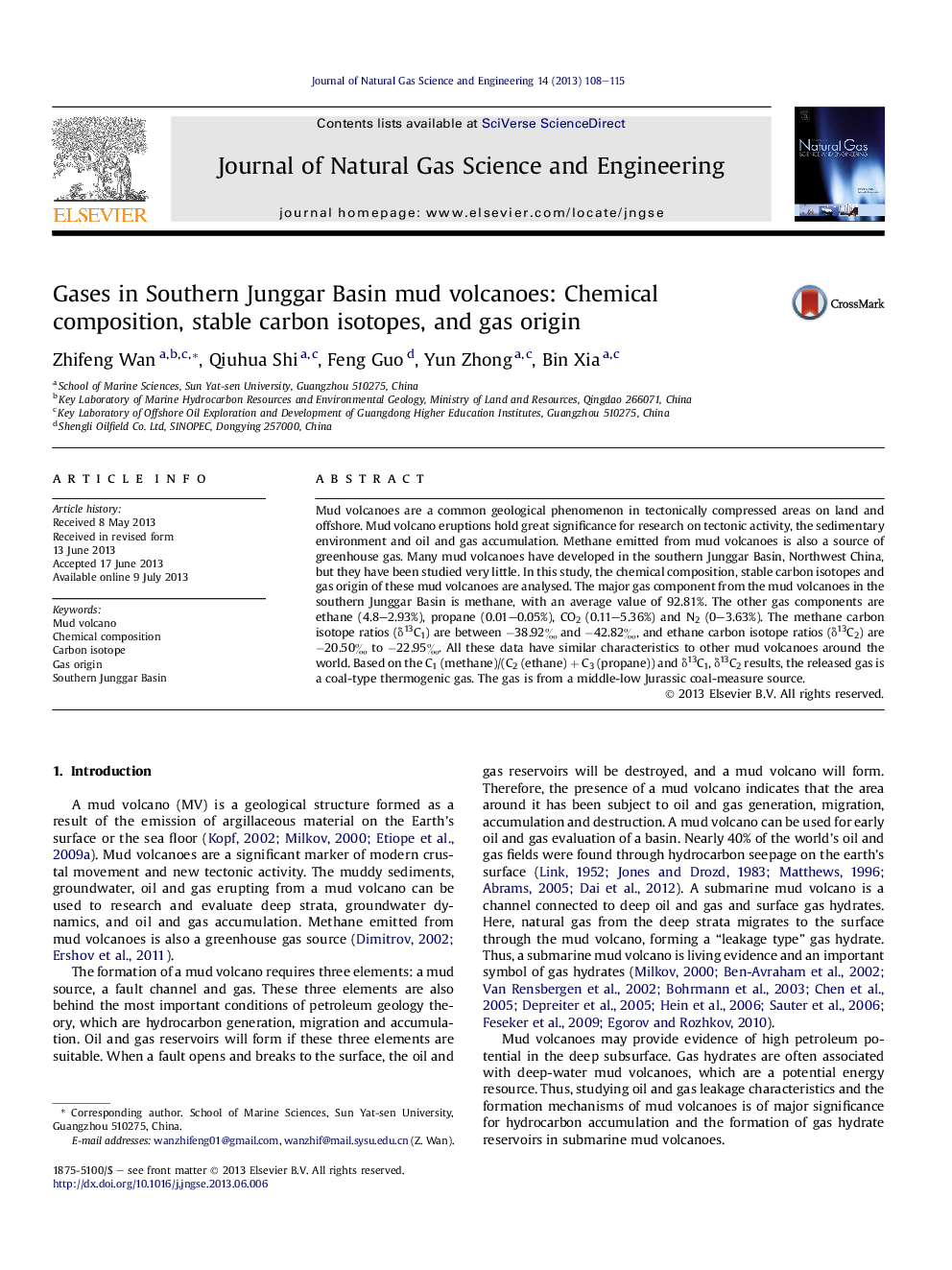| Article ID | Journal | Published Year | Pages | File Type |
|---|---|---|---|---|
| 1758050 | Journal of Natural Gas Science and Engineering | 2013 | 8 Pages |
•The major gas component from the MVs in the Junggar Basin is methane (92.81%).•The methane carbon isotope ratios (δ13C1) are between −38.92‰ and −42.82‰.•The released gas is a coal-type thermogenic gas, similar to other MVs of the world.•The gas from the MVs is from a middle-low Jurassic coal-measure source.
Mud volcanoes are a common geological phenomenon in tectonically compressed areas on land and offshore. Mud volcano eruptions hold great significance for research on tectonic activity, the sedimentary environment and oil and gas accumulation. Methane emitted from mud volcanoes is also a source of greenhouse gas. Many mud volcanoes have developed in the southern Junggar Basin, Northwest China, but they have been studied very little. In this study, the chemical composition, stable carbon isotopes and gas origin of these mud volcanoes are analysed. The major gas component from the mud volcanoes in the southern Junggar Basin is methane, with an average value of 92.81%. The other gas components are ethane (4.8–2.93%), propane (0.01–0.05%), CO2 (0.11–5.36%) and N2 (0–3.63%). The methane carbon isotope ratios (δ13C1) are between −38.92‰ and −42.82‰, and ethane carbon isotope ratios (δ13C2) are −20.50‰ to −22.95‰. All these data have similar characteristics to other mud volcanoes around the world. Based on the C1 (methane)/(C2 (ethane) + C3 (propane)) and δ13C1, δ13C2 results, the released gas is a coal-type thermogenic gas. The gas is from a middle-low Jurassic coal-measure source.
